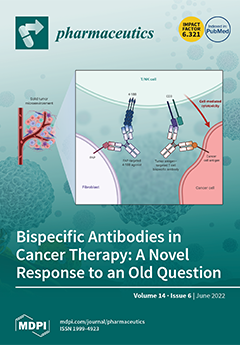Considering that acetylcholinesterase (AChE) inhibition is the most important mode of action expected of a potential drug used for the treatment of symptoms of Alzheimer’s disease (AD), our previous pilot study of 4-aminoquinolines as potential human cholinesterase inhibitors was extended to twenty-two new structurally distinct 4-aminoquinolines bearing an adamantane moiety. Inhibition studies revealed that all of the compounds were very potent inhibitors of AChE and butyrylcholinesterase (BChE), with inhibition constants (
Ki) ranging between 0.075 and 25 µM. The tested compounds exhibited a modest selectivity between the two cholinesterases; the most selective for BChE was compound
14, which displayed a 10 times higher preference, while compound
19 was a 5.8 times more potent inhibitor of AChE. Most of the compounds were estimated to be able to cross the blood–brain barrier (BBB) by passive transport. Evaluation of druglikeness singled out fourteen compounds with possible oral route of administration. The tested compounds displayed modest but generally higher antioxidant activity than the structurally similar AD drug tacrine. Compound
19 showed the highest reducing power, comparable to those of standard antioxidants. Considering their simple structure, high inhibition of AChE and BChE, and ability to cross the BBB, 4-aminoquinoline-based adamantanes show promise as structural scaffolds for further design of novel central nervous system drugs. Among them, two compounds stand out: compound
5 as the most potent inhibitor of both cholinesterases with a
Ki constant in low nano molar range and the potential to cross the BBB, and compound
8, which met all our requirements, including high cholinesterase inhibition, good oral bioavailability, and antioxidative effect. The QSAR model revealed that AChE and BChE inhibition was mainly influenced by the ring and topological descriptors MCD, Nnum, RP, and RSIpw3, which defined the shape, conformational flexibility, and surface properties of the molecules.
Full article






